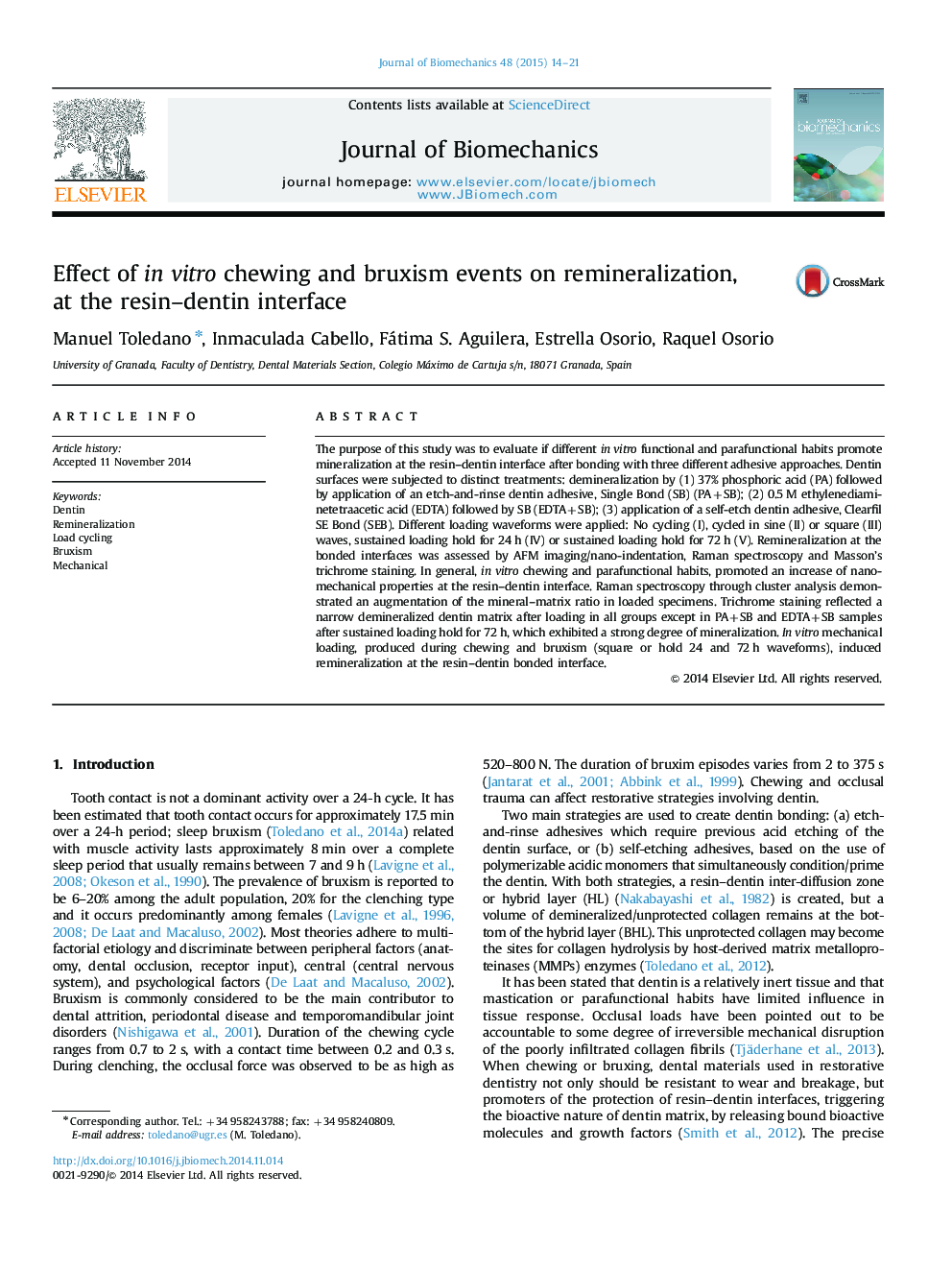| Article ID | Journal | Published Year | Pages | File Type |
|---|---|---|---|---|
| 10431648 | Journal of Biomechanics | 2015 | 8 Pages |
Abstract
The purpose of this study was to evaluate if different in vitro functional and parafunctional habits promote mineralization at the resin-dentin interface after bonding with three different adhesive approaches. Dentin surfaces were subjected to distinct treatments: demineralization by (1) 37% phosphoric acid (PA) followed by application of an etch-and-rinse dentin adhesive, Single Bond (SB) (PA+SB); (2) 0.5Â M ethylenediaminetetraacetic acid (EDTA) followed by SB (EDTA+SB); (3) application of a self-etch dentin adhesive, Clearfil SE Bond (SEB). Different loading waveforms were applied: No cycling (I), cycled in sine (II) or square (III) waves, sustained loading hold for 24Â h (IV) or sustained loading hold for 72Â h (V). Remineralization at the bonded interfaces was assessed by AFM imaging/nano-indentation, Raman spectroscopy and Masson's trichrome staining. In general, in vitro chewing and parafunctional habits, promoted an increase of nano-mechanical properties at the resin-dentin interface. Raman spectroscopy through cluster analysis demonstrated an augmentation of the mineral-matrix ratio in loaded specimens. Trichrome staining reflected a narrow demineralized dentin matrix after loading in all groups except in PA+SB and EDTA+SB samples after sustained loading hold for 72Â h, which exhibited a strong degree of mineralization. In vitro mechanical loading, produced during chewing and bruxism (square or hold 24 and 72Â h waveforms), induced remineralization at the resin-dentin bonded interface.
Related Topics
Physical Sciences and Engineering
Engineering
Biomedical Engineering
Authors
Manuel Toledano, Inmaculada Cabello, Fátima S. Aguilera, Estrella Osorio, Raquel Osorio,
